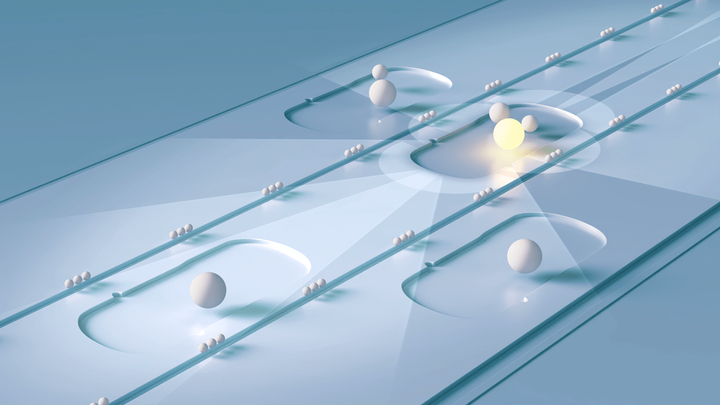
On November 9, Volvo Cars will show the all-electric EX90 flagship SUV. This vehicle is expected to usher in a new era not only for the company but also for the security industry as a whole.
Volvo Cars has a clear vision for safety: no one should be seriously injured or killed in a new Volvo car. In order to achieve a future without accidents, the company’s engineers study all the causes of their occurrence. But in order to protect people inside the car, it is necessary to improve the car’s understanding of the driver’s condition.
A driver awareness system will be standard in the EX90. It will include sensors in the Volvo cabin that will help the car understand in real time: the driver is not in the best condition to drive, and measures should be taken to avoid a collision.
Driver understanding system
Volvo Cars understands that even the best drivers sometimes need help. ‘Research shows that by observing the driver’s gaze, the frequency and duration of eye closure, it is possible to infer the driver’s general condition,’ said Emma Tivesten, senior technical expert at the Volvo Cars Safety Center. — With a sensor system, Volvo will determine whether the driver can drive independently. If he needs additional help due to drowsiness, distraction, inattention or feeling unwell, the system will provide it in the most appropriate way for the situation on the road.’
The driver understanding system makes its debut in the new Volvo EX90 and complements a state-of-the-art array of external sensors. To monitor the owner’s gaze, the car is equipped with two cameras to detect the first alarm signals regarding its condition. By measuring how long the driver looks at the road ahead and taking into account natural variations, the system understands that the driver’s eyes, and therefore his mind, are not focused on driving.

Does the owner rarely follow the road ahead? This is a sign that he is distracted. Maybe to look at the phone. Too much? This is cognitive distraction: he is so focused on his thoughts that he is no longer aware of what is happening on the road.
An important indicator for the system is the capacitive steering wheel of the car, which will control the stability of the movement if the driver lets it go.
From now on, Volvo will use patented technology to detect gaze and steering patterns in real time. And that is why it will independently take measures to help the owner when necessary. First, the system will warn the driver with a special sound signal, which will increase with the severity of the situation. If it doesn’t respond to increasingly clear warnings, the car will automatically stop safely at the curb, sending a warning to other road users with its hazard warning lights.
Thomas Broberg, acting head of the Volvo Cars Safety Center, said: “Over the past decades, thanks to dedicated work on collision avoidance systems, we have made significant progress in the development of the external view sensor system. Sensors in the cabin are the next step in safety. We will continue to learn and develop new features step by step. The level of security will improve because our level of knowledge will continue to grow.’
An innovative range of sensors
Volvo Cars makes every effort to avoid collisions, fatalities and serious injuries. At the same time, the company is convinced that the safest collision is one that never happens. Therefore, Volvo Cars continues to improve collision avoidance systems, aiming to achieve zero deaths and serious injuries in its cars.
The new Volvo EX90 debuts with the most advanced sensors on the automotive market: 8 cameras, 5 radars, 16 ultrasonic sensors and an innovative LiDAR sensor. And this is a 360° view in real time.
LiDAR (Light Detection and Ranging) is a remote sensing method that uses light in the form of a pulsed laser to measure range with high precision.
Recent studies by Volvo Cars show that integrating LiDAR into an already safe Volvo car reduces the number of serious accidents by 20% and overall accident avoidance by 9%.
The LiDAR technology integrated into the roof of the Volvo EX90 can detect pedestrians at a distance of up to 250 meters. If there is something small and dark ahead, for example, a tire on a dark road, the technology recognizes it 120 meters away. And all this while driving on the expressway, regardless of the lighting. LiDAR is a guarantee of a realistic perception of the surrounding space, which cameras and radars cannot provide on their own.
From now on, Volvo cars, combining advanced sensors, proprietary software and the car’s core computing power, will not only help the driver, but will also better understand when it is needed and exactly what kind of help is needed.

Cars’ understanding of the outside world, along with the ability to better understand the driver, is an important part of Volvo Cars’ future autonomous driving technology. After safety checks and obtaining the necessary permits, this technology will be implemented in the EX90.
Understanding the human experience
Volvo EX90 will not only understand the driver and help him as needed. Over time, the car will learn from new data and update itself, becoming even safer.
The development of modern security technology is based on an understanding of human behavior based on decades of research in this field. At Volvo Cars, we are convinced that every person has encountered at least one traffic accident during his life. Even the best professional drivers can get distracted and tired.
The company’s goal is to support owners when they require it most and reduce the risk of collisions. Therefore, the Volvo EX90 is equipped with an invisible safety shield with innovative technology. It allows the car to understand the inner state of the driver and the world around.
In the near future, Volvo Cars plans to present even more innovations and technologies available in the EX90. Features that will help owners not only be, but also feel safe at any time and under any conditions.

